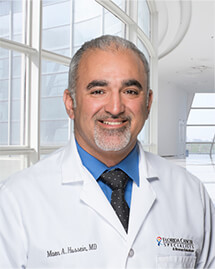Author(s): Stefan D. Anker, MD, PhD1,2; Tim Friede, PhD3,4; Javed Butler, MD, MPH5,6; Khawaja M. Talha, MBBS7; Marius Placzek, PhD3; Monika Diek, MA1,2; Anna Nosko, PhD8; Adriane Stas, BA4,9; Stefan Kluge, MD8; Dominik Jarczak, MD8; Geraldine deHeer, MD8; Meike Rybczynski, MD10,11; Antoni Bayés-Genís, MD, PhD12; Michael Böhm, MD13; Andrew J. S. Coats, MD14; Frank Edelmann, MD15,16; Gerasimos Filippatos, MD17; Gerd Hasenfuß, MD4,18; Wilhelm Haverkamp, MD1,2; Mitja Lainscak, MD, PhD19,20; Ulf Landmesser, MD16,21,22; Iain C. Macdougall, MD23; Bela Merkely, MD, PhD, DSc24; Burkert M. Pieske, MD25; Fausto J. Pinto, MD, PhD26; Tienush Rassaf, MD27; Jennifer K. Visser-Rogers, PhD28; Giuseppe Rosano, PhD29,30; Maurizio Volterrani, MD29,31; Stephan von Haehling, MD, PhD4,18; Markus S. Anker, MD16,21,22,32; Wolfram Doehner, MD, PhD33; Hüseyin Ince, MD25; Friedrich Koehler, MD16,34,35; Gianluigi Savarese, MD36; Muhammad Shahzeb Khan, MD, MSc6,37; Ursula Rauch-Kröhnert, MD16,21,22; Tommaso Gori, MD38,39; Teresa Trenkwalder, MD40,41; Ibrahim Akin, MD42,43; Christina Paitazoglou, MD44; Iwona Kobielusz-Gembala, MD45; Luca Kuthi, MD24; Norbert Frey, MD46; Manuela Licka, MD46; Stefan Kääb, MD47; Karl-Ludwig Laugwitz, MD41,48; Piotr Ponikowski, MD, PhD49; Mahir Karakas, MD, PhD, MBA8,11;
Author Affiliations
1Deutsches Herzzentrum der Charité, Campus Virchow Klinikum, Berlin, Germany; 2Institute of Health Centre for Regenerative Therapies, German Centre for Cardiovascular Research, partner site Charité Universitätsmedizin, Berlin, Germany; 3Department of Medical Statistics, University Medical Centre Göttingen, Göttingen, Germany; 4German Centre for Cardiovascular Research, partner site Lower Saxony, Germany; 5Department of Medicine, University of Mississippi Medical Center, Jackson; 6Baylor Scott and White Research Institute, Dallas, Texas; 7Department of Cardiology, Loyola University Medical Centre, Maywood, Illinois; 8Department of Intensive Care Medicine, University Medical Centre Hamburg-Eppendorf, Hamburg, Germany; 9Department of Medical Informatics, University Medical Centre Göttingen, Göttingen, Germany; 10University Heart and Vascular Centre Hamburg, Department of Cardiology, University Medical Centre Hamburg-Eppendorf, Hamburg, Germany; 11German Centre for Cardiovascular Research, partner site Hamburg/Kiel/Lübeck, Hamburg, Germany; 12Heart Institute, Hospital Universitari Germans Trias i Pujol, CIBERCV, Barcelona, Spain; 13Department of Medicine III and Homburg Institute for Cardio, Renal, and Metabolic Medicine, Saarland University, Homburg, Germany; 14Heart Research Institute, Sydney, Australia; 15Department of Cardiology, Angiology, and Intensive Care Medicine, Deutsches Herzzentrum der Charité, Campus Virchow Klinikum, Berlin, Germany; 16German Centre for Cardiovascular Research, partner site Berlin, Charité Universitätsmedizin, Berlin, Germany; 17Department of Cardiology, Attikon University Hospital, School of Medicine, National and Kapodistrian University of Athens, Athens, Greece; 18Department of Cardiology and Pneumology, University Medical Centre Göttingen, Georg August University of Göttingen, Göttingen, Germany; 19Division of Cardiology, General Hospital Murska Sobota, Murska Sobota, Slovenia; 20Faculty of Medicine, University of Ljubljana, Ljubljana, Slovenia; 21Department of Cardiology, Angiology, and Intensive Care Medicine, Deutsches Herzzentrum der Charité, Campus Benjamin Franklin, Berlin, Germany; 22Berlin Institute of Health, Berlin, Germany; 23Department of Renal Medicine, King’s College Hospital, London, England; 24Heart and Vascular Centre, Semmelweis University, Budapest, Hungary; 25Division of Cardiology, Department of Internal Medicine, University Medicine Rostock, Rostock, Germany; 26Centro Academico de Medicina de Lisboa, CCUL@RISE, Faculdade de Medicina da Universidade de Lisboa, Lisbon, Portugal; 27West German Heart and Vascular Centre, Department of Cardiology and Vascular Medicine, University Hospital Essen, University Duisburg-Essen, Essen, Germany; 28Coronado Research, Newcastle, England; 29Department of Human Sciences and Promotion of Quality of Life, San Raffaele Open University of Rome, Rome, Italy; 30Cardiology, San Raffaele Cassino Hospital, Cassino, Italy; 31IRCCS San Raffaele Roma, Rome, Italy; 32School of Cardiovascular and Metabolic Health, University of Glasgow, Glasgow, Scotland; 33Berlin Institute of Health-Centre for Regenerative Therapies and Department of Cardiology, Deutsches Herzzentrum der Charité and German Centre for Cardiovascular Research, partner site Charité-Universitätsmedizin Berlin, Berlin, Germany; 34Department of Cardiology, Angiology, and Intensive Care Medicine, Deutsches Herzzentrum der Charité, Campus Charité Mitte, Berlin, Germany; 35Centre for Cardiovascular Telemedicine, Charité-Universitätsmedizin Berlin, Corporate Member of Freie Universität Berlin and Humboldt-Universität zu Berlin, Berlin, Germany; 36Department of Clinical Science and Education, Södersjukhuset, Karolinska Institutet, Stockholm, Sweden; 37Baylor Scott and White Health, Heart Hospital, Plano, Texas; 38Department of Cardiology, Cardiology I, University Medical Centre Mainz, Mainz, Germany; 39German Centre for Cardiovascular Research, Standort RheinMain, Frankfurt, Germany; 40Technical University of Munich, School of Medicine and Health, Department of Cardiovascular Diseases, German Heart Centre Munich, TUM University Hospital, Munich, Germany; 41German Centre for Cardiovascular Research, partner site Munich Heart Alliance, Munich, Germany; 42Department of Cardiology, Angiology, Haemostaseology, and Medical Intensive Care, University Medical Centre Mannheim, Medical Faculty Mannheim, Heidelberg University, Heidelberg, Germany; 43German Centre for Cardiovascular Research, partner site Heidelberg/Mannheim, Mannheim, Germany; 44Department of Cardiology, Angiology, and Intensive Care Medicine, University Heart Centre Lübeck, Medical Clinic II, University Hospital Schleswig-Holstein, Lübeck, Germany; 45Oświęcimskie Centrum Badań Klinicznych, Oświęcim, Poland; 46Department of Cardiology, Angiology, and Pneumolgy, Clinical Trial Unit, University Hospital Heidelberg, Heidelberg, Germany; 47Department of Medicine I, LMU University Hospital, LMU Munich, Munich, Germany; 48Department of Internal Medicine I, Technical University Munich University Hospital, Munich, Germany; 49Institute of Heart Diseases, Medical University and University Hospital, Wroclaw, Poland;
